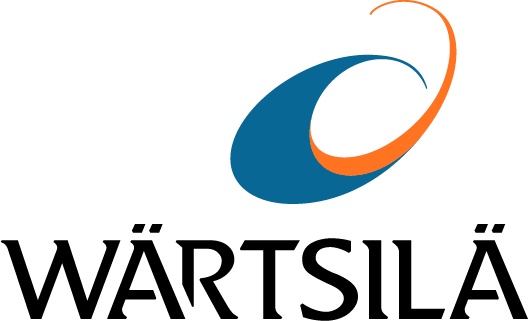

Wärtsilä published its Financial Statements Bulletin 2024 on Wednesday 5 February 2025 at 8:30 am EET. Here are the key messages and Q&A on the report.
General/market environment
In 2024 Wärtsilä took firm steps towards our targets, and we continued to develop positively in many ways. We achieved all-time highs in order intake, absolute operating result and cash flow from operating activities. During 2024, we also significantly enhanced the profitability of all businesses. Furthermore, our order book is at an all-time high, positioning us well for future success as we move into 2025. Our strategy, the Wärtsilä Way, is yielding results.
The market environment for our businesses remained relatively stable throughout 2024. However, as the year progressed, geopolitical tensions clearly increased, introducing uncertainty to the macroeconomic outlook due to heightened risks of protectionism and trade policy uncertainty. Despite these challenges, our customers in the marine and energy industries remained increasingly focused on decarbonisation.
In the energy market, the transition towards renewables continued to advance. Wind and solar are expected to post record installations in 2024 and 2025, driven not only by climate concerns but also by affordability. The demand for balancing technologies is closely linked to the increasing share of intermittent renewables in the energy system. Renewable-led power systems require flexibility in various forms: balancing power plants, alongside battery energy storage, are critical to reaching global climate goals. In 2024 both thermal balancing and battery energy storage experienced their highest levels of market activity to date.
In the marine market, the growth in global trade volumes combined with a shift in trade flows resulted in a significant boost to demand for ship capacity in 2024. This, coupled with a growing pressure to decarbonise operations, supported the demand for both newbuilds and service. Investments in new ships were clearly above the levels seen in 2023, and we saw a healthy pickup in interest towards alternative fuels, which now accounted for 49% of the capacity of contracted vessels. Despite the efforts to increase shipyard capacity and output especially in China but also in South Korea, shipyard capacity utilisation rates remain high and shipyard orderbooks remain long, indicating that a shortage of yard capacity still exists.
Order intake, net sales, operating result and cash flow
In 2024 Wärtsilä’s order intake increased organically by 17%. Service order intake increased, driven primarily by growth in Marine. Equipment order intake increased supported by higher activity in all businesses. Net sales increased organically by 9%, with clear growth in both service and equipment.
The comparable operating result increased by 39% to EUR 694 million, which represents 10.8% of net sales. Comparable operating result increased in all businesses. Cash flow from operating activities ended strong and totalled EUR 1,208 million in 2024, supported by the better result and improved working capital.
Board of Directors’ dividend proposal
The Board of Directors proposes that a dividend of EUR 0.44 per share shall be paid for the financial year 2024.
Outlook
Marine
Wärtsilä expects the demand environment for the next 12 months (Q1/2025-Q4/2025) to be better than that of the comparison period.
Energy
Wärtsilä expects the demand environment for the next 12 months (Q1/2025-Q4/2025) to be better than that of the comparison period.
However, Wärtsilä underlines that the current high external uncertainties make forward looking statements challenging.
Q&A
You expect the demand environment to be “better” for the next 12 months (Q1/2025–Q4/2025) for Marine. What are the main drivers for this?
- We see good momentum and opportunities continuing in the Cruise and Ferry segments, markets where we typically have a strong presence.
- In addition, the pipeline for Container segment continues to remain active offering good opportunities in auxiliary engines.
- The transition to sustainable future fuels is well underway and decarbonisation requirements support fleet renewal and the demand for retrofit solutions. The adoption of alternative fuels and hybrid applications is accelerating, further strengthening our position.
- In service business, we see good opportunities with our strategy of moving up the service value ladder and supporting our customers to improve operational efficiency.
You expect the demand environment to be “better” for the next 12 months (Q1/2025–Q4/2025) for Energy. What are the main drivers for this?
- The growing demand for electricity driven by the ongoing electrification in many industries is expected to continue.
- Renewable energy (wind and solar) is anticipated to be the cheapest way to generate electricity going forward. This requires balancing power to cover for intermittency.
- Power generation with coal is expected to be further downscaled.
- Decreasing inflation and interest rates are expected to encourage investment decisions in the mid- to long-term.
- There is a good pipeline in both Engine Power Plants and Energy Storage & Optimisation. The utilisation of our Energy installed base is stable, providing good opportunities for services going forward.
Why did the ANCS classification as an asset held for sale lead to EUR 20 million in Items Affecting Comparability?
- Back in 2023, we recognised an impairment loss of EUR 45 million in the ANCS business related to goodwill and other non-current assets.
- Now, in the fourth quarter, we agreed to divest the ANCS business. Following this, we have re-evaluated (based on IFRS requirements) the fair value versus the carrying value (i.e., the book value) of the ANCS business. That resulted in a EUR 20 million reversal of the previously recognised impairment in other non-current assets.
Your operating cash flow continued to increase and working capital continued to be negative. Will this trend continue in 2025 and what could change it?
- Cash flow from operating activities ended strong and totalled EUR 1,208 million in 2024, supported by the improved result and improved working capital, which was EUR -787 million.
- It is important to note that the current negative working capital levels are unusual for our business. Our mid to long term historical working capital to net sales ratio has always been positive until 2022, while we closed 2023 and 2024 on a negative level.
- Actions on all elements of working capital (payment terms, receivables, payables, inventories, etc.) have supported us to further reduce the working capital level in 2024.
- Even though many of these working capital actions are sustainable improvements, such as stock optimisation, lower overdue receivable balances and faster throughput times, we do believe it will normalize to a less negative or potentially small positive working capital to sales ratio in the mid to long term.
- As an example, the shift from EPC to EEQ in Energy has had a positive impact on cashflow as EPC contracts typically tie up capital longer. The mix going forward between EPC and EEQ is likely to vary somewhat, having an impact on working capital.
- Also, order intake for equipment, agreements and service projects have seen increased levels over the past years. For reference, equipment order intake has increased by EUR ~1.2 billion during the past 2 years. These revenue streams typically have pro-rata upfront down-payments and mid-delivery payments. This mix can change over time, similar to the milestone levels we can negotiate, and may have a negative impact on working capital.
How could the potential US tariffs impact your business and competitive landscape both regarding Marine and Energy?
- In Marine, we do not expect the potential tariffs to have a significant impact on our Marine business as most ship building and Marine service activities primarily take place outside the USA.
- In Energy, the impact of potential tariffs is difficult to predict. We continue to actively monitor the situation. The enforcement of any additional tariffs will take time and the possible impact on our business remains uncertain.
What opportunities do you see in data centres?
- We have seen a shift in the market for data centre power. Previously data centres were smaller in size and the main source of power for data centres was through a grid connection. The market for back-up power for these plants was dominated by high-speed engines.
- Currently we see that data centres grow in size and power need, and in an increasing number of geographies they are not able to secure grid connections, or there may be a significant delay before a grid interconnection is available, which creates demand for captive baseload power. The data centre market, which previously required only 5-10 MW of thermal backup generation, now increasingly demands thermal baseload capacity up to hundreds of MWs.
- This creates opportunities for us, and we see growth potential in this segment, particularly in the US and Europe, where the pipeline of data centre tenders is most active.
- Wärtsilä is targeting off-grid baseload opportunities through third-party Energy Centres and IPPs, and our sweet spot is in the 50–400 MW market.
- We have disclosed a partnership with AVK through which we are involved in three projects in Europe.
Your order intake in Engine Power Plants was 20% better than in very strong comparison period Q4/2023. What was behind this, and can we expect this to continue?
- We signed a few larger projects in Q4 that contributed positively.
- The Engine Power Plants pipeline is solid, and the order intake depends on the timing of the closing of the projects.
Why did the Marine equipment orders decrease in Q4?
- It is good to note, that the comparison period was supported by a high share of merchant orders. On the other hand, order intake in cruise segment increased.
- On annual level, the equipment order intake increased by 6%.
- We expect the demand environment for Marine to be “better” for the next 12 months (Q1/2025–Q4/2025) for Marine.